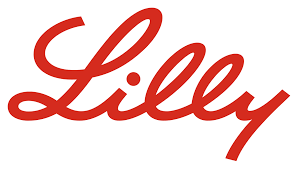Eli Lilly surges after strong Q3 earnings as weight-loss drug boom lifts 2025 outlook — Can it stay ahead of Novo Nordisk?

Eli Lilly
Eli Lilly & Co. delivered another blowout quarter, lifting its full-year forecast after earnings and revenue soared past Wall Street’s expectations — a performance powered by explosive demand for its best-selling weight-loss and diabetes drugs, Zepbound and Mounjaro.
Shares of the pharmaceutical giant climbed nearly 5% in premarket trading Thursday, as investors cheered what analysts are calling one of the strongest showings yet in the global race for GLP-1 weight management treatments.
For the third quarter of 2025, Eli Lilly reported revenue of $17.6 billion, representing a 54% year-over-year increase, and easily outpacing analyst projections of $16.01 billion. Adjusted earnings per share came in at $7.02, far above the $5.69 expected by Wall Street.
Blockbusters Zepbound and Mounjaro Drive Growth
Eli Lilly’s two star drugs continued to dominate the market. Mounjaro, its diabetes and weight-loss therapy, generated $6.52 billion in revenue for the quarter — a remarkable 109% jump compared to the same period last year. Meanwhile, Zepbound, the company’s newer obesity treatment, raked in $3.57 billion, up 184% year-on-year and just ahead of forecasts.
U.S. sales accounted for $11.3 billion, boosted by a 60% surge in prescription volume, according to the company. Although price adjustments trimmed some of the gains, strong demand more than offset any reductions.
Net income surged to $5.58 billion, or $6.21 per share, compared with $970 million, or $1.07 per share, in the prior year.
Higher 2025 Guidance and Strategic Expansion
Riding on this momentum, Eli Lilly raised its full-year revenue forecast to between $63 billion and $63.5 billion, up from a prior estimate of $60–$62 billion. The company now expects adjusted earnings per share to range from $23 to $23.70, reflecting improved performance across its portfolio.
The new forecast factors in current U.S. trade tariffs but excludes potential future levies on pharmaceutical imports.
Beyond its core business, Eli Lilly is aggressively expanding its digital health infrastructure and manufacturing footprint, with new investments in Puerto Rico and Singapore. On Wednesday, the company announced a partnership with Walmart to offer discounted Zepbound vials for cash-paying patients, improving accessibility and brand visibility.
Facing Off With Novo Nordisk
Eli Lilly’s dominance comes amid intensifying rivalry with Danish drugmaker Novo Nordisk, whose Ozempic and Wegovy have defined the GLP-1 category. Both companies are racing to develop the next generation of weight-loss treatments, particularly oral formulations that promise easier use and wider adoption.
Eli Lilly’s experimental obesity pill, Orforglipron, is seen as a potential game-changer. Meanwhile, Novo Nordisk made headlines this week with a rival bid to acquire U.S.-based obesity biotech Metsera, edging out Pfizer in a bold attempt to close the competitive gap.
Market Outlook
Investors view Eli Lilly’s continued growth as proof that demand for GLP-1 drugs remains far from peaking. However, analysts caution that pricing pressures, supply constraints, and upcoming competitors could test its ability to sustain record margins.
Still, for now, the Indianapolis-based drugmaker appears firmly in control of the weight-loss gold rush — a market some analysts believe could exceed $100 billion globally by 2030.
FAQs
1. What drove Eli Lilly’s latest earnings surge?
Strong global demand for its GLP-1 drugs, Mounjaro and Zepbound, which treat diabetes and obesity, significantly boosted earnings and revenue.
2. How much did Eli Lilly raise its 2025 forecast by?
The company lifted its revenue outlook to between $63 billion and $63.5 billion and projected earnings per share between $23 and $23.70.
3. How is Eli Lilly competing with Novo Nordisk?
Both companies dominate the GLP-1 segment, but Eli Lilly leads in sales and is developing a new oral obesity pill, Orforglipron, to strengthen its advantage.
4. What are GLP-1 drugs?
They are medications that help regulate blood sugar levels and reduce appetite, making them effective for treating type 2 diabetes and obesity.
5. Why did Eli Lilly partner with Walmart?
The collaboration aims to increase access to Zepbound through in-store pickup options at discounted rates for patients paying out of pocket.



